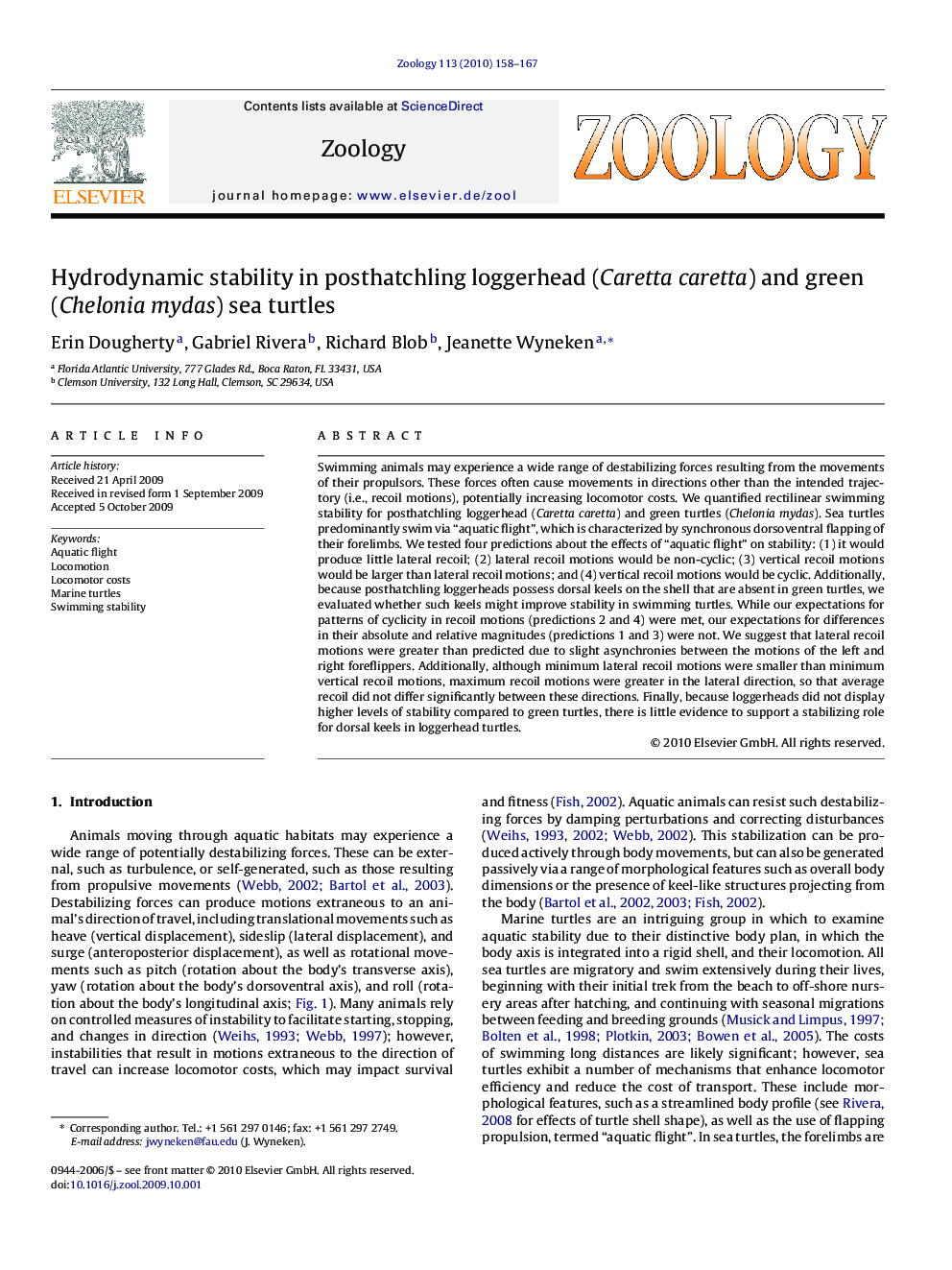| Article ID | Journal | Published Year | Pages | File Type |
|---|---|---|---|---|
| 2791278 | Zoology | 2010 | 10 Pages |
Swimming animals may experience a wide range of destabilizing forces resulting from the movements of their propulsors. These forces often cause movements in directions other than the intended trajectory (i.e., recoil motions), potentially increasing locomotor costs. We quantified rectilinear swimming stability for posthatchling loggerhead (Caretta caretta) and green turtles (Chelonia mydas). Sea turtles predominantly swim via “aquatic flight”, which is characterized by synchronous dorsoventral flapping of their forelimbs. We tested four predictions about the effects of “aquatic flight” on stability: (1) it would produce little lateral recoil; (2) lateral recoil motions would be non-cyclic; (3) vertical recoil motions would be larger than lateral recoil motions; and (4) vertical recoil motions would be cyclic. Additionally, because posthatchling loggerheads possess dorsal keels on the shell that are absent in green turtles, we evaluated whether such keels might improve stability in swimming turtles. While our expectations for patterns of cyclicity in recoil motions (predictions 2 and 4) were met, our expectations for differences in their absolute and relative magnitudes (predictions 1 and 3) were not. We suggest that lateral recoil motions were greater than predicted due to slight asynchronies between the motions of the left and right foreflippers. Additionally, although minimum lateral recoil motions were smaller than minimum vertical recoil motions, maximum recoil motions were greater in the lateral direction, so that average recoil did not differ significantly between these directions. Finally, because loggerheads did not display higher levels of stability compared to green turtles, there is little evidence to support a stabilizing role for dorsal keels in loggerhead turtles.
